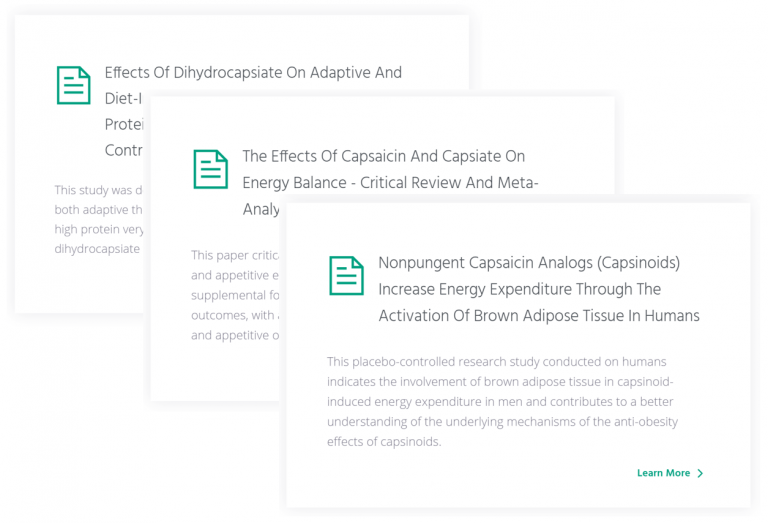
Functional Mechanism & Efficacy
What is CapsiAtra?
CapsiAtra®, a dihydrocapsiate compound naturally found in CH-19 Sweet peppers
in “ScovilleScale”
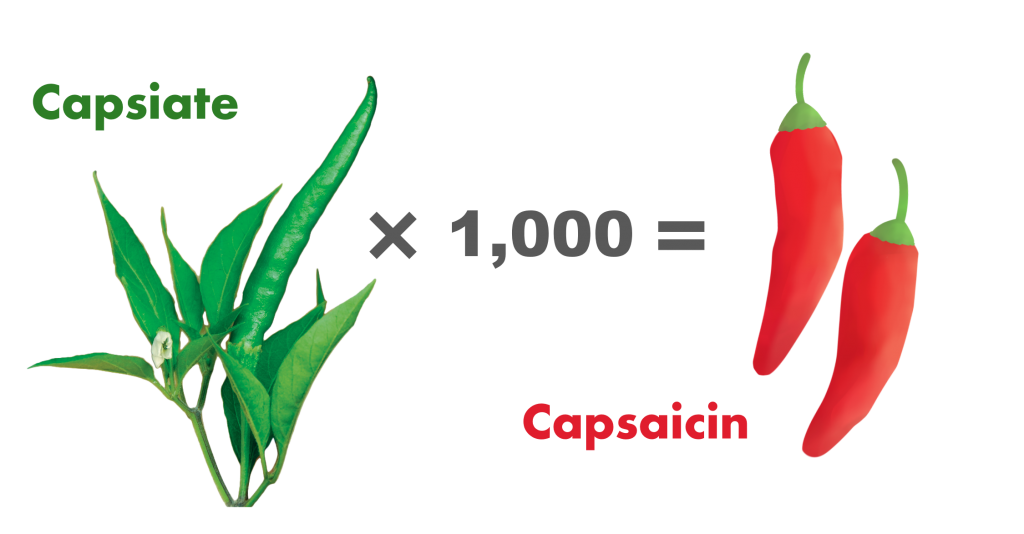
Note CapsiAtra® is a Dihydrocapsiate
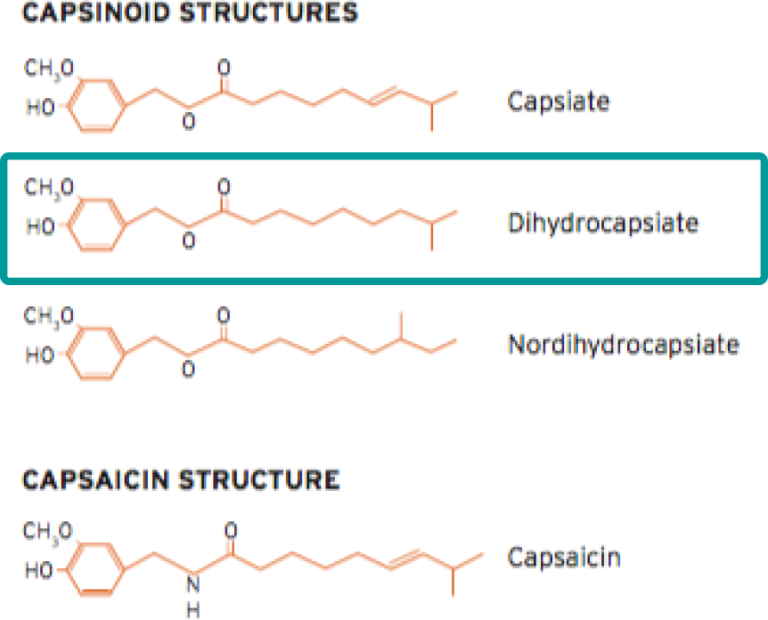
> Dihydrocapsiate is a compound found in CH-19 Sweet peppers
- Non-burning and non-irritating to the stomach
> Increases REE
- The amount of calories burned by the body under normal resting conditions
- Reduces age-related REE slowdown
> Increases fat oxidation
- The ability of the body to burn calories off of stored fat within the body
- Significant reduction in abdominal fat seen in human studies
> Optimizes energy expenditure through fat oxidation and decreased utilization of carbohydrates
- Reduction of anaerobic respiration in favor of aerobic respiration by sparing muscle glycogen stores
- Sparing glycogen in the muscle while reducing lactic acid levels
> Safety Profile
- GRAS with letter of no objection from FDA
- No known adverse side effects
- No impact on blood pressure or heart rate
> NDI notification letter
> EU novel food approved
> Shelf-life of 24 months
> Manufactured in Japan
Functional Mechanism and Efficacy
The thermogenic and lipolytic effects of capsinoids, like capsaicin itself, are mediated by the Transient Receptor Potential Vanilloid 1 (TRPV1) receptors in the mouth and throughout the gastrointestinal tract. TRPV1 receptors in the gut are linked with the sympathetic nervous system (SNS). When activated, they increase SNS activity. TRPV1 receptors present on the tongue and in the oral cavity are responsible for, among other things, detection of thermal heat. When capsaicin binds to oral TRPV1 sites, one feels the sensation of heat and pungency. Capsinoids also stimulate TRPV1 receptors, but their effect is primarily on receptors in the throat and gut, not the mouth. Owing to the structural differences from capsaicin, the capsinoids are unable to reach the TRPV1 receptors on the tongue, which are located slightly below the mucosal surface. As a result, capsinoids do not produce the oral sensation of heat or the pungent taste associated with chili peppers, but they do produce the capsaicin-like SNS response once they bind to TRPV1 receptors in the throat and gut.
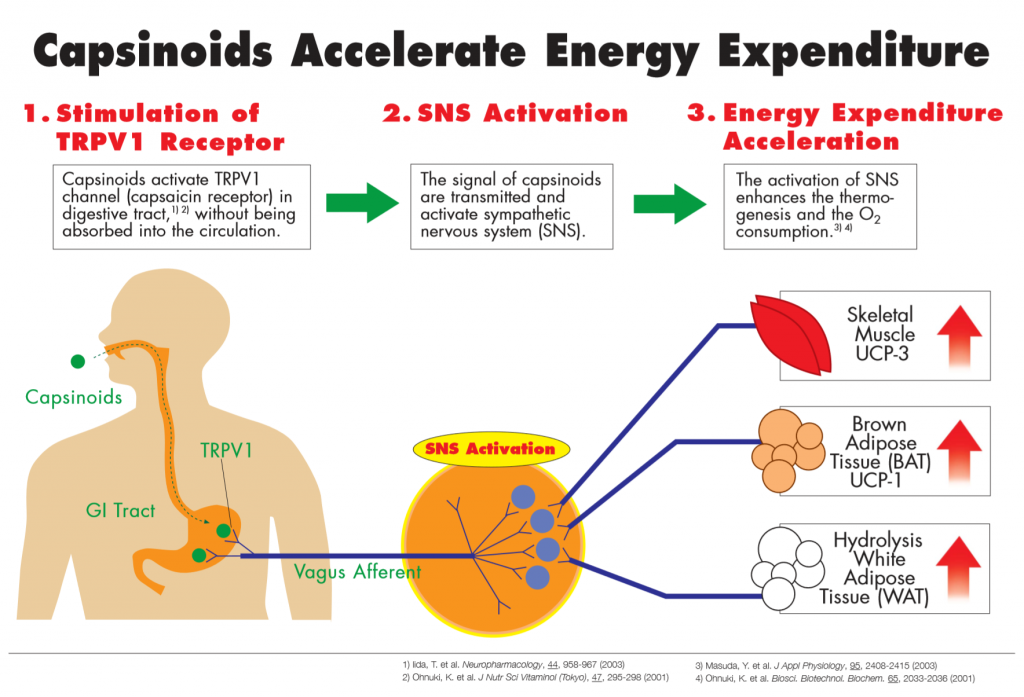
Substantiated
Enhancing fat burning / thermogenesis / BMR*
- 1000 x less pungent than capsaicin
- Utilizes fat for energy
- Helps increase basal metabolic rate
Clinically, supplementation with capsinoids and dihydrocapsiate can have significant impact on human energy expenditure in overweight people. In 2010, investigators at the Pennington Biomedical Research Center, Baton Rouge, LA, published data from a 4-week study involving 78 overweight men randomized to supplementation with 3 or 9 mg/day dihydrocapsiate—one of the key capsinoid compounds—or placebo. Subjects were permitted to continue on their usual ad libitum diets. Compared with the men on placebo, those taking the supplements showed an average metabolic rate increase of 54 kcal/day—a small but significant thermogenic increase.
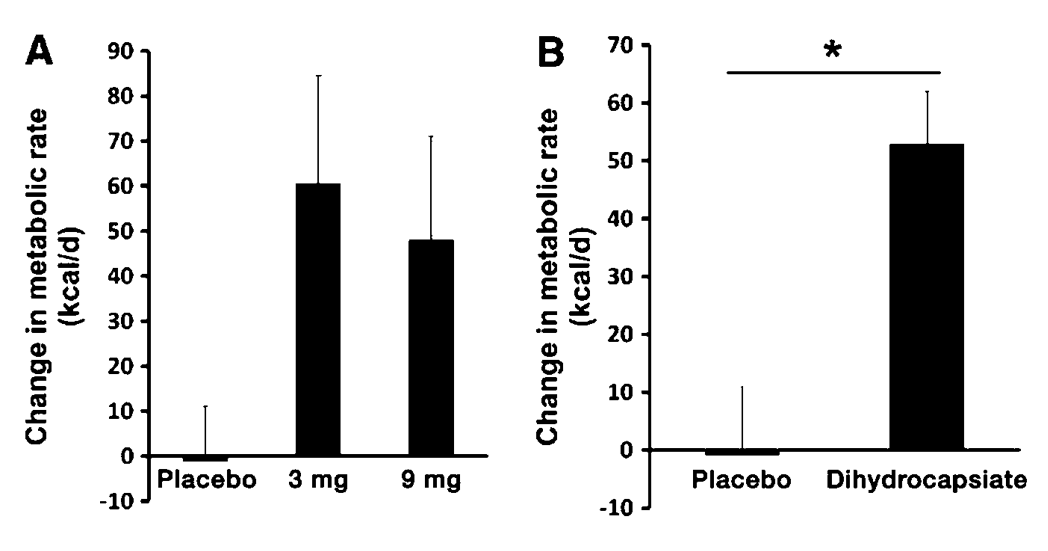
Change in metabolic rate after 28 d of placebo or dihydrocapsiate ingestion. Change in metabolic rate calculated as 2.5-h resting metabolic rate on day 28 minus RMR before pill ingestion on day 1. A: Difference calculated in each group (placebo, 3 and 9 mg dihydrocapsiate/d). B: Difference calculated after combining groups receiving dihydrocapsiate (3 and 9 mg) compared with placebo. Data were analyzed by using covariance analysis (PROC MIXED; SAS Institute, Cary, NC) with dose (0, 3, and 9 mg). Statistical significance for multiple comparisons was adjusted by using the Tukey-Kramer method. *P < 0.05.
Safe – Easily Hydrolyzed Without The Side Effects of Capsaicin
Deliver the thermogenic punch of capsaicin without the pungency, or the potential adverse effects.
The study published by Shin and colleagues, this trial by Hachiya and colleagues showed that capsaicin-rich Cayenne Long Slims raised systolic blood pressure (on the order of 10–20 mmHg) and heart rate (4–16 bpm). The capsinoid-rich, capsaicin-free CH-19 Sweet pepper had no such effect (See right). Given that most overweight people are already at risk for hypertension, it is best to avoid anything that further increases blood pressure or heart rate. In short, capsinoids deliver the thermogenic punch of capsaicin without the pungency, or the potential adverse effects.
Capsaicin-rich California Long Slim peppers (labeled “Hot” on graph) trigger marked increases in blood pressure and heart rate following ingestion; in contrast, the CH-19 Sweet pepper, which is rich in capsinoids but produces no capsaicin, has no such vascular effects. (From Hachiya S, et al. 2007)
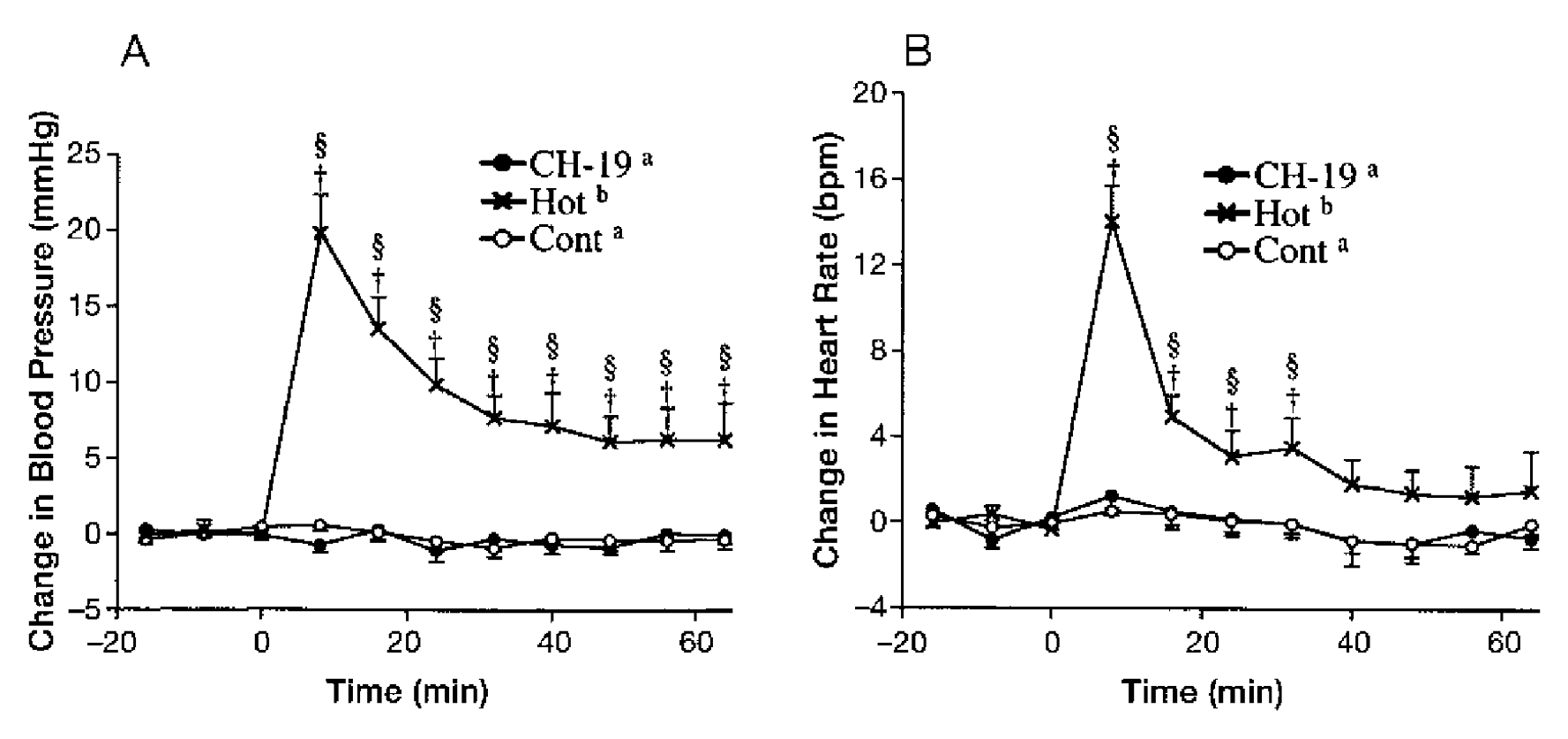
Solid data Portfolio
Enhancing fat burning / thermogenesis / BMR*
- More than 50 extensive published studies
- Substantiatedby numerous rigorous studies.
- Fat burning / Thermogenesis/ BMR improvement
Safety profile established
Deliver the thermogenic punch of capsaicin without the pungency, or the potential adverse effects.
CapsiAtra®: POSITIVE RESULTS In all studies, there have been no incidents of allergy or sensitivity to capsinoids. Extensive toxicity and safety data gathered from over 50 published studies on the capsiates formed the basis of the product’s FDA GRAS and NDI status and alos to Novel Food status at Europe. Since capsinoids are broken down as they pass through the GI tract and not absorbed into the blood, there is little chance of systemic reactions. *That said, people with known sensitivities to chili peppers should be monitored closely especially during the first weeks of capsinoids ingestion.

**Generally Recognized as Safe (CapsiAtra)

The Ajinomoto Difference

Ajinomoto Co. is a science-oriented manufacturer and marketer of processed food, seasonings, fine chemicals, pharmaceuticals, animal nutrition and nutritional supplements. The company’s mission is to contribute to the world’s food and wellness, and to better lives for the future.
Since its founding in 1909, Ajinomoto Co. has established itself as a household food brand in Japan, and a reliable source of nutrition that helps people savor those golden moments in life. Today, Ajinomoto Co. operates globally, with operations in 30 countries, and backed by more than 100 manufacturing facilities.
Ajinomoto Co. launched the crystal of essential amino acids in 1956. Today, the company is a world leader in the production and supply of amino acids and is widely recognized as the standard of quality in amino acids for some of world’s largest food and pharmaceutical brands.


